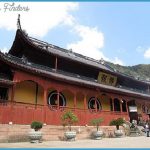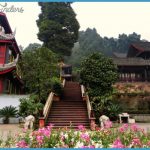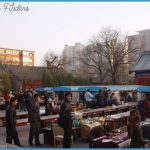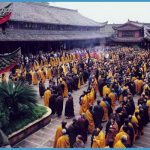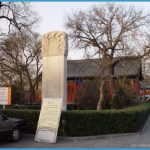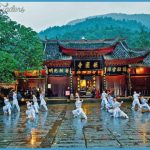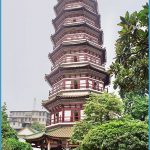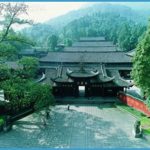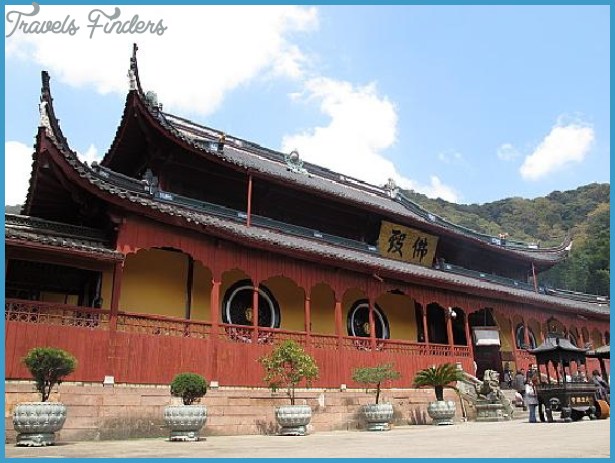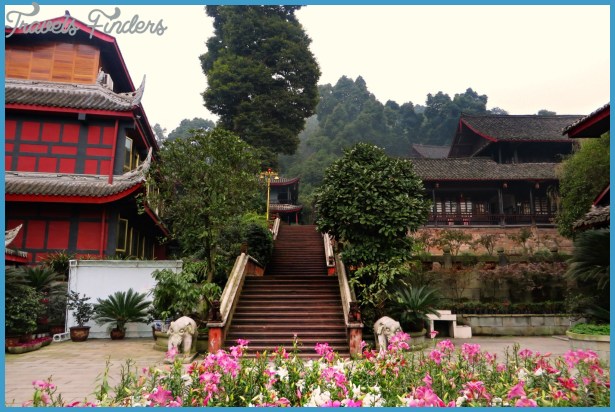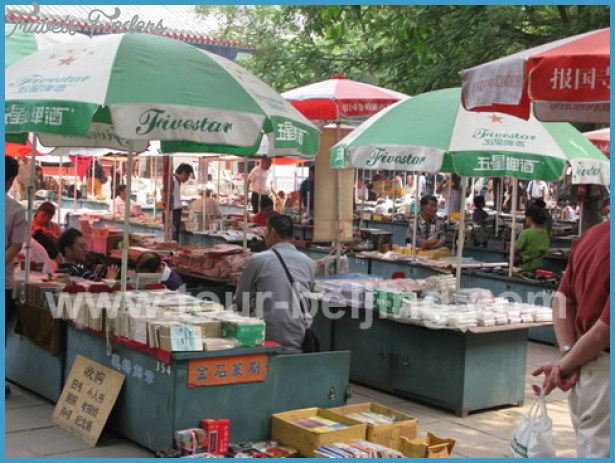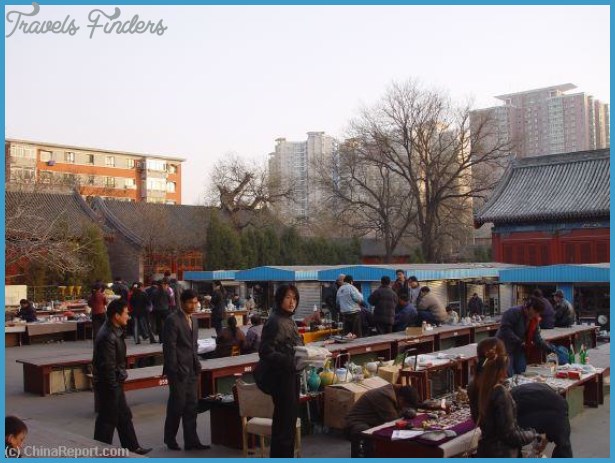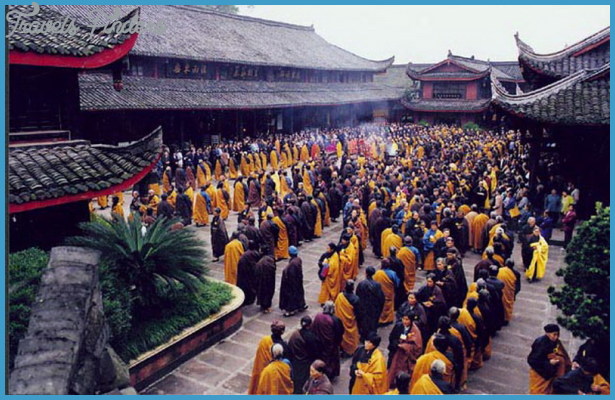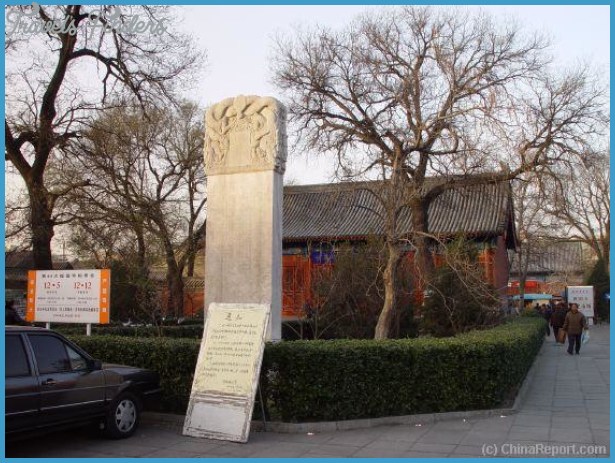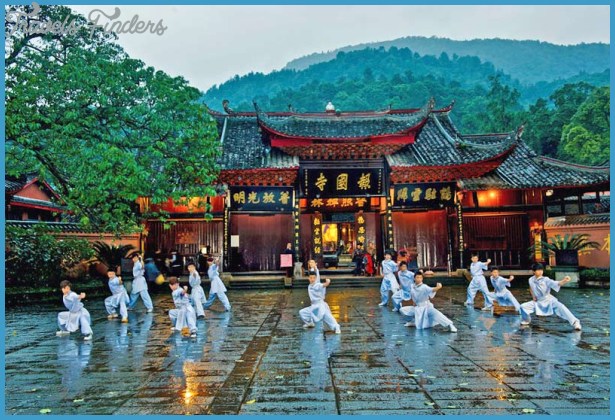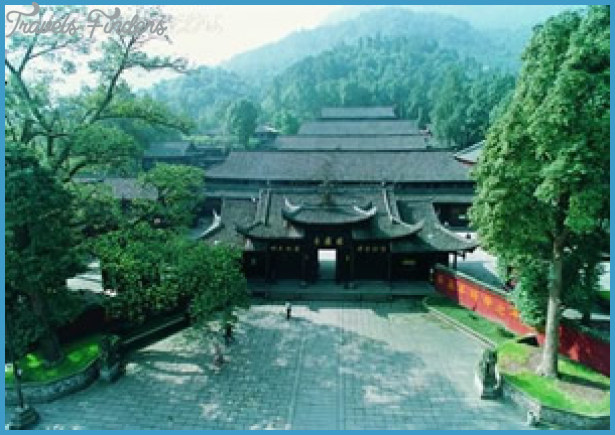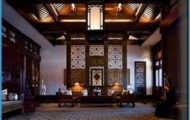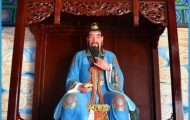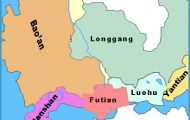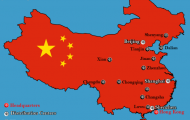The Temple of Services to the Country stands at the foot of Mount Emeishan at a height of 550m/1805ft. It can be said to form the entrance door to this Buddhist “Mecca”. The numerous temple buildings erected during the reign of Emperor Wanli (1573-1620) house many valuable works of art, including a 2-4m/8ft high statue ofthe Buddha in colourfully enamelled porcelain which dates from 1415. Visitors can also admire a 7m/23ft high bronze pagoda from the Ming period (1368-1644), decorated with more than 4700 small Buddha figures and the whole Sutra of Avatamsaka.
Temple ofthe Vanquished Tiger (Fuhu Si)
Pavilion of Clear Sound (Quingyin Ge)
Temple of Eternity (Wannian Si)
The Temple of the Vanquished Tiger lies about 1km/1100yd west of the Temple of Services to the Country. The present buildings were erected in 1651 on the foundations of an old shrine built during the Tang period (618-907). As this region was at one time threatened by wild tigers the local inhabitants gave the temple its name in the hope that it would provide them with protection against the beasts.
The pavilion of Clear Sound stands 15km/9 miles west of the Temple of Services to the Country, at a height of 770m/2527yd, at the confluence of the White Dragon river (Bailongjiang) and the Black Dragon river (Heilongjiang); it was named after the soft lapping ofthe waters of these two rivers. Two stone arched bridges span the rivers.
The Temple of Eternity lies about 1 km/1100yd north-west ofthe Pavilion of Clear Sound, at a height of 1020m/3348ft. The original edifice, which was commenced in the Jin era (265-420) and completed during the Ming period (1368-1644), was almost completely destroyed in a conflagration in 1946.
Only the Palace of Tiles (Zhuan Dian), built under Emperor Wanli (1573 1620), remained unharmed and was restored in 1953 when two temples were added. This palace houses a bronze statue of Bodhisattva Puxian of 980, standing 7-3m/24ft tall and weighing 62 tonnes. The Buddhist deity is shown mounted on the back of an elephant with six trunks.
This monastery, situated 1120m/3675ft up the mountain, was built in the Ming period (1402-1644). Note the tall bronze lamp decorated with hundreds of Buddha figures and dragons.
Nine old men are said to have lived in this Taoist cave known as Jiulao Dong.
Situated at a height of 1752m/5750ft, the Temple of the Peak of the Immortals (Xianfeng Si) dates from the year 1612.
The Elephant’s Bathing Pool (Xixianchi), at a height of 2070m/6794ft and 14km/9 miles from the Temple of the Peak of the Immortals, is well worth a visit. According to legend Bodhisvatta Puxian used to bathe his favourite elephant in this hexagonal pond. The temple on the edge of the pond dates from 1699.
Golden Peak, about 5km/3 miles south of Elephant’s Bathing Pool, is 3075m/10,092ft high, making it one of the highest peaks on Mount Emeishan.
On Golden Peak stand Huacang Si monastery and also the Monastery of the Reclining Clouds (Woyunan). The latter is famous for its bronze stele dating from the second half of the 15th c.
A short distance from the monastery lies the well-known Terrace of Beautiful Views (Duguang Tai), from where the visitor can enjoy “the three magnificent views of Mount Emeishan” -the Sunrise, the “Sea of Clouds” and the “Light of Buddha”.
The “Light of Buddha” is the name given to a halo phenomenon, as a result of which a person looking out from the viewing terrace can see his or her own shadow a short distance away surrounded by a circle of light in the seven colours of the spectrum.

